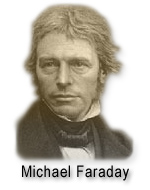Energy
Energy generation, consumption and transmission are enormous topics and certainly can't be covered in a small number of quizzes. Nevertheless, please feel free to contact us and suggest any energy-related topic that might be of interest to a wide audience. If we find your suggestion interesting, we will try to add a related quiz or other activity to this website.
On this page you will find links to several quizzes that have been designed to educate everyone regardless of their age about energy. Our quizzes range from very easy to more challenging. All quizzes are easy to use, fun and educational. You can try them as many times as you like.
What is energy?
Ask ten people what is energy and you will get ten different answers. One will say that energy is what you get from food; another - that energy is what we need to run home appliances, etc. Somebody will even remember the famous E=mc2 formula. The fact is that energy is all around us and we use it all the time even if we have no clue what exactly energy is.
 In physics, energy is usually defined as the ability to do work. Energy is a rather abstract concept. We can't see, touch or smell it. What we do see, are consequences of energy transformations. For example, a simple electric bulb can be viewed as a device that converts electrical energy into energy of photons that we perceive as light.
In physics, energy is usually defined as the ability to do work. Energy is a rather abstract concept. We can't see, touch or smell it. What we do see, are consequences of energy transformations. For example, a simple electric bulb can be viewed as a device that converts electrical energy into energy of photons that we perceive as light.
From the everyday standpoint, energy is what makes the things around us change in some way. Anything we do, see or hear implies some type of work that requires conversion of energy from one form to another.
Where do we get energy?
Just a few hundred years ago people were using a tiny fraction of energy consumed today. Every day we need more and more energy to run our factories, airplanes, cars, ships, computers and other modern marvels.
 Some of the energy we now consume comes from burning petroleum that is derived from crude oil. Other major energy sources include coal, natural gas and uranium. Unfortunately, using these materials leads to numerous environmental problems. In addition, none of these energy sources is renewable. In other words, their supplies are limited and become harder to get every day. Although there are different opinions as to the amount of fossil fuels (oil, coal, natural gas) left on our planet, very few scientists would venture to say that we have more than a 50-year supply of these fuels.
Some of the energy we now consume comes from burning petroleum that is derived from crude oil. Other major energy sources include coal, natural gas and uranium. Unfortunately, using these materials leads to numerous environmental problems. In addition, none of these energy sources is renewable. In other words, their supplies are limited and become harder to get every day. Although there are different opinions as to the amount of fossil fuels (oil, coal, natural gas) left on our planet, very few scientists would venture to say that we have more than a 50-year supply of these fuels.
 A typical car with an internal combustion engine is an example of energy being used exactly where it was produced. The engine takes gasoline, burns it, and converts the gasoline chemical energy into mechanical energy which is transferred to the wheels and moves the car.
A typical car with an internal combustion engine is an example of energy being used exactly where it was produced. The engine takes gasoline, burns it, and converts the gasoline chemical energy into mechanical energy which is transferred to the wheels and moves the car.
Another way to use energy is at a location different from where it was produced. If you are reading this text on a desktop computer, chances are your computer receives electric energy from a power plant that is located tens, hundreds or even thousands of miles away. Electrical energy can be relatively easily and cheaply transferred over large distances. That's why it is currently the main secondary energy source. Different electric power plants may use all kinds of primary energy sources (such as coal, oil, uranium, wind, hydropower, solar power, biomass), but their final product is the electricity that can be conveniently sent, almost at the speed of light, to another location where it's needed.
 Even though modern power plants incorporate some amazing scientific and technological achievements, the basic idea has not changed much since the first electric power plants built at the end of the 19th century. In the majority of cases, electric power is produced by electrical generators attached to turbines. The turbines can be rotated by steam, water or wind. Steam can be generated by burning fossil fuels or biomass. Steam can also be produced by heat generated in the nuclear reactor.
Even though modern power plants incorporate some amazing scientific and technological achievements, the basic idea has not changed much since the first electric power plants built at the end of the 19th century. In the majority of cases, electric power is produced by electrical generators attached to turbines. The turbines can be rotated by steam, water or wind. Steam can be generated by burning fossil fuels or biomass. Steam can also be produced by heat generated in the nuclear reactor.
How do we measure energy?
 Due to historical and technical reasons there are several different units of energy that are widely used. In SI (International System of Units) the energy unit is 1 Joule. It is equal to 1 kg * m2 / s2 or 1 watt-second. This is a small unit and it's rarely used in everyday life. The unit of energy that almost everyone is familiar with is the kilowatt-hour (kW h). It is closely related to Joule and equals 3600 * 1000 Joules. The 3600 multiplier signifies the number of seconds in one hour.
Due to historical and technical reasons there are several different units of energy that are widely used. In SI (International System of Units) the energy unit is 1 Joule. It is equal to 1 kg * m2 / s2 or 1 watt-second. This is a small unit and it's rarely used in everyday life. The unit of energy that almost everyone is familiar with is the kilowatt-hour (kW h). It is closely related to Joule and equals 3600 * 1000 Joules. The 3600 multiplier signifies the number of seconds in one hour.
Other commonly used energy units are Calories (often used to measure energy contents of food) and BTUs (British Thermal Units).
Some important events in the history of energy development.
|
What is the future of energy?
 Every day we use more and more energy. At the same time, the supply of fossil fuels is being constantly depleted. This means that the industry as well as individuals will have to gradually switch to renewable sources of energy and to significantly increase the efficiency of power generation, transmission and consumption.
Every day we use more and more energy. At the same time, the supply of fossil fuels is being constantly depleted. This means that the industry as well as individuals will have to gradually switch to renewable sources of energy and to significantly increase the efficiency of power generation, transmission and consumption.
 We can already see some new (and not so new) technologies helping to reduce our dependency on the non-renewable energy sources. For example, wind power is being used more and more to generate electricity in the areas with large empty spaces and strong winds. Hybrid cars are using a combination of gasoline engines and electric motors to dramatically increase gas mileage without compromising drivability. The examples are many and their number will continue to increase. Finding new sustainable and environment-friendly energy sources is both a challenge and a great opportunity.
We can already see some new (and not so new) technologies helping to reduce our dependency on the non-renewable energy sources. For example, wind power is being used more and more to generate electricity in the areas with large empty spaces and strong winds. Hybrid cars are using a combination of gasoline engines and electric motors to dramatically increase gas mileage without compromising drivability. The examples are many and their number will continue to increase. Finding new sustainable and environment-friendly energy sources is both a challenge and a great opportunity.
